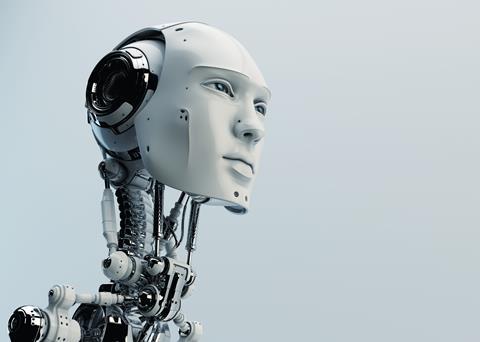Advances in artificial intelligence (AI) and machine learning (ML) have enabled manufacturers and broadcasters to develop and implement smarter tools and applications to boost the entire content lifecycle.

AI and ML are top of most 2018 trend lists, with the technologies being adopted by many different industries.
Indeed, experts forecast these technologies will be incorporated as part of the standard toolkit for broadcasters to transform the process of creating and managing content.
BBC Research and Development Senior R&D Engineer Stephen Jolly said the demand for automated intelligence is coming from everywhere.
He defined AI as the use of computers to automate tasks that would otherwise have to be completed by humans. ML is a technique under the AI umbrella and notably in the spotlight for its ability to optimise and enhance processes.
“ML gives our team ways to address machine vision and listening problems that would have been unthinkable with older approaches to AI” - Stephen Jolly
He said: “From an engineering point of view, ML gives our team ways to address machine vision and listening problems that would have been unthinkable with older approaches to AI, and a real incentive to explore the potential of machine learning to benefit our industry.”
BBC Design and Engineering Head of Data Architecture Gabriel Straub said: “By ML we mean that rather than a programmer defining all the rules of a programme, an algorithm is used to find the rules based on some historical data. This is then used in order to make predictions about the future and often to optimise some future actions.”
ML has become a natural partner to other recent industry developments, Jolly explained: “The move towards IP and the cloud will naturally put our content in the right formats and the right places for us to apply these new techniques to it.”
Technologists are looking to improve media workflows and streamline the user experience to offer solutions and greater creative opportunities.
Jolly said: “This is a very fast-moving field, and new tools and frameworks are continually being developed and improved. Simply keeping up with progress requires an investment of time. ML solutions to problems are notable for requiring a very large amount of training data to learn from, which can be a challenge to work in this area.”
The appeal of AI for broadcasters is the efficiency of employing machines to understand the audience demands, managing data and filtering content for specific themes, as well as creating original content.
IBM Watson Media Senior Product Manager David Kulczar told IBC365: “A simple case of AI infancy is allowing creators to target themes and specific content that are most valuable to its consumers.” Kulczar continued: “We are heading towards auto creation and using AI capabilities in the production process.”
This was employed in the collaboration with 20th Century Fox in the automatic creation of a trailer for sci fi horror film Morgan, where AI was applied to conduct a visual analysis which tracked emotions alongside the music and tone of voice.
Ready for deployment?
Kulczar explained the technology is maturing and the industry is ready for deployment based on appetite and trust in the technology. He said: “Morgan was a pilot, we will see more and more successors going forwards and the economics will dictate the appetite of major media players. I expect more integration directing into the business process.”
Axle AI is a media management company employing AI capabilities to automatically tag media, search transcripts and identify faces in a browser-based interface. Chief Executive Sam Bogoch said the demand for ML technology comes from the need to save time and shorten media production cycles.
“Consumption is the main driver of AI in broadcast digital media creation” - Sam Bogoch
He said: “This is a response to exponentially growing media demand, and consumption is the main driver of AI in broadcast digital media creation.”
The ability for AI software to discern, distinguish and its ability to adapt and learn is based on rules and feedback. Bogoch explained the need for AI implementation is crucial to dramatically improve productivity in media creation.

Chief Executive and Chief Technology Officer Mika Rautiainen from AI video insight cloud service and software manufacturer, Valossa said the changing media landscape and challenges to consumption and creation means video needs to be produced faster and delivered through multiple platforms in different formats.
“Consumers demand services with highly personalised and flexible viewing experience. It is impossible to have humans manage these complexities without the help of AI-powered, cognitive support systems and tools.”
The main challenge broadcasters are faced with is understanding the human cognitive process throughout the content lifecycle for AI automation to be effective and helpful.
For broadcasters, effective and helpful AI automation needs to understand the human cognitive processes throughout content production.
Rautiainen told said: “AI is becoming used in several parts of the broadcast production and delivery workflows as well as in the consumer services to enhance the viewing experience and bring forward new monetisation opportunities.”
Moving target
There are greater demands on each stage of the content lifecycle, from the digitisation and multi-platform opportunities the production of media requires overhauling from conception to delivery.
”AI capabilities help make more intelligent decisions to make the content offering more valuable” - David Kulczar
“Old workflows and old tools just don’t support this cost-effectively,” Rautiainen continued, “AI can help in highlighting potentially inappropriate or harmful pieces inside the content and bring forward more targeted and meaningful video advertising.”

The demand is coming from “every single element in the value chain,” Kulczar explained. From the creators and distributors, licensing content and consumers expecting an improved experience.
Employing AI learning techniques from the creation process helps to make intelligent decisions and fundamentally a more valuable asset from the beginning.
Kulczar highlighted the products on the market are a direct response to increase the scale of media opportunities. He said: “Offering solutions for enriching video processing using AI capabilities to help make more intelligent decisions make the content offering more valuable from the infancy stage.”
As a new technology, IBM Watson Media have discovered issues with noise and dialects but are quickly expanding the ML abilities to address these challenges. Kulczar said a major concern is the hesitation to trust the machines to do a good job. Ultimately, you need to rely on the proof of concept.
Rautiainen explained: “The biggest challenges the broadcast industry faces today are accelerating content creation cycles, producing and delivering content for multiple platforms and creating personalised user experiences for the non-linear services.
“All of these require more efficient processes of creating, producing, delivering and managing recorded video material… AI can be trained effectively to streamline the most time consuming and repetitive processes.”













![Adeline Platform Help[64]](https://d3dh6of9cnaq4t.cloudfront.net/Pictures/100x67/0/6/9/30069_adelineplatformhelp64_996092_crop.png)







No comments yet